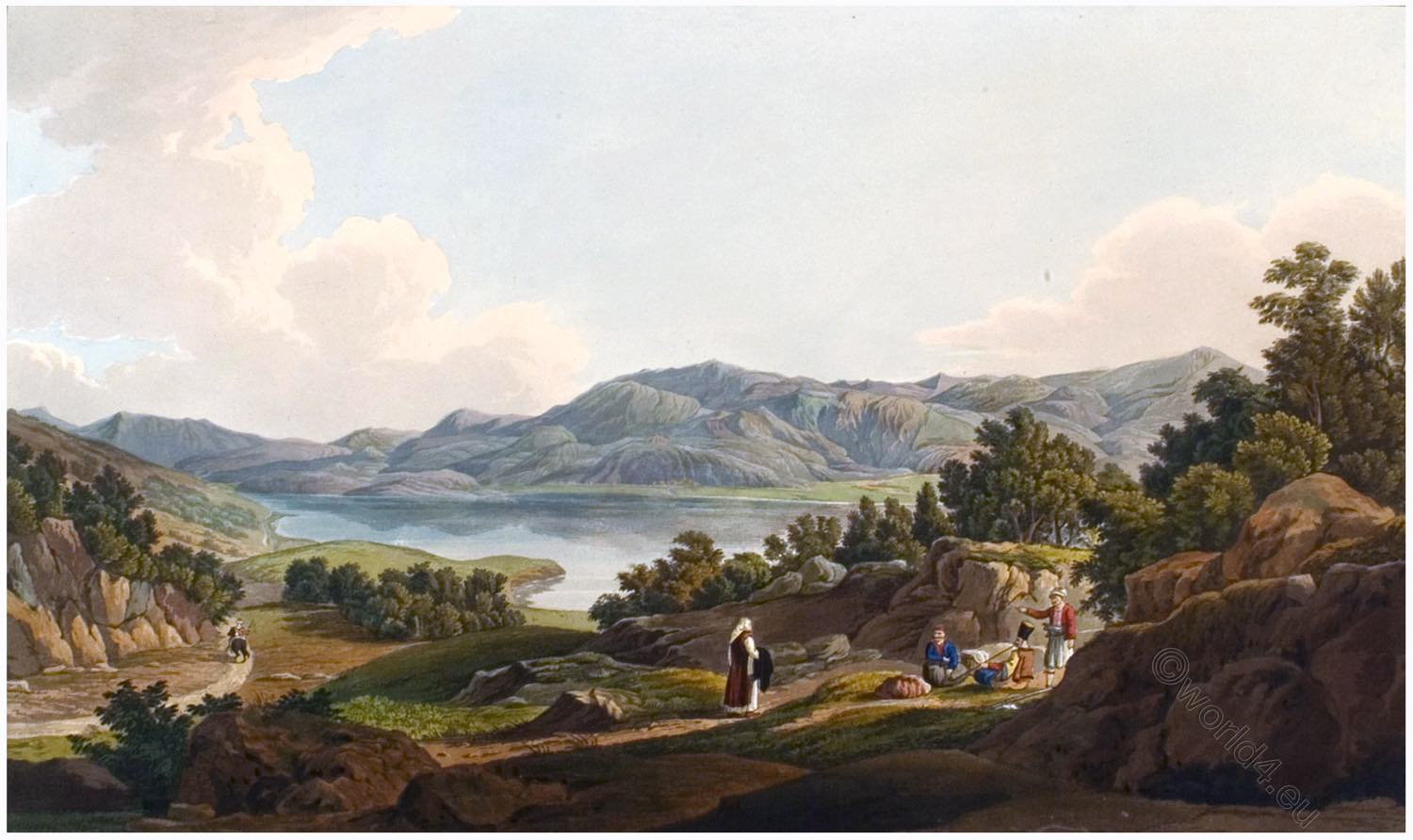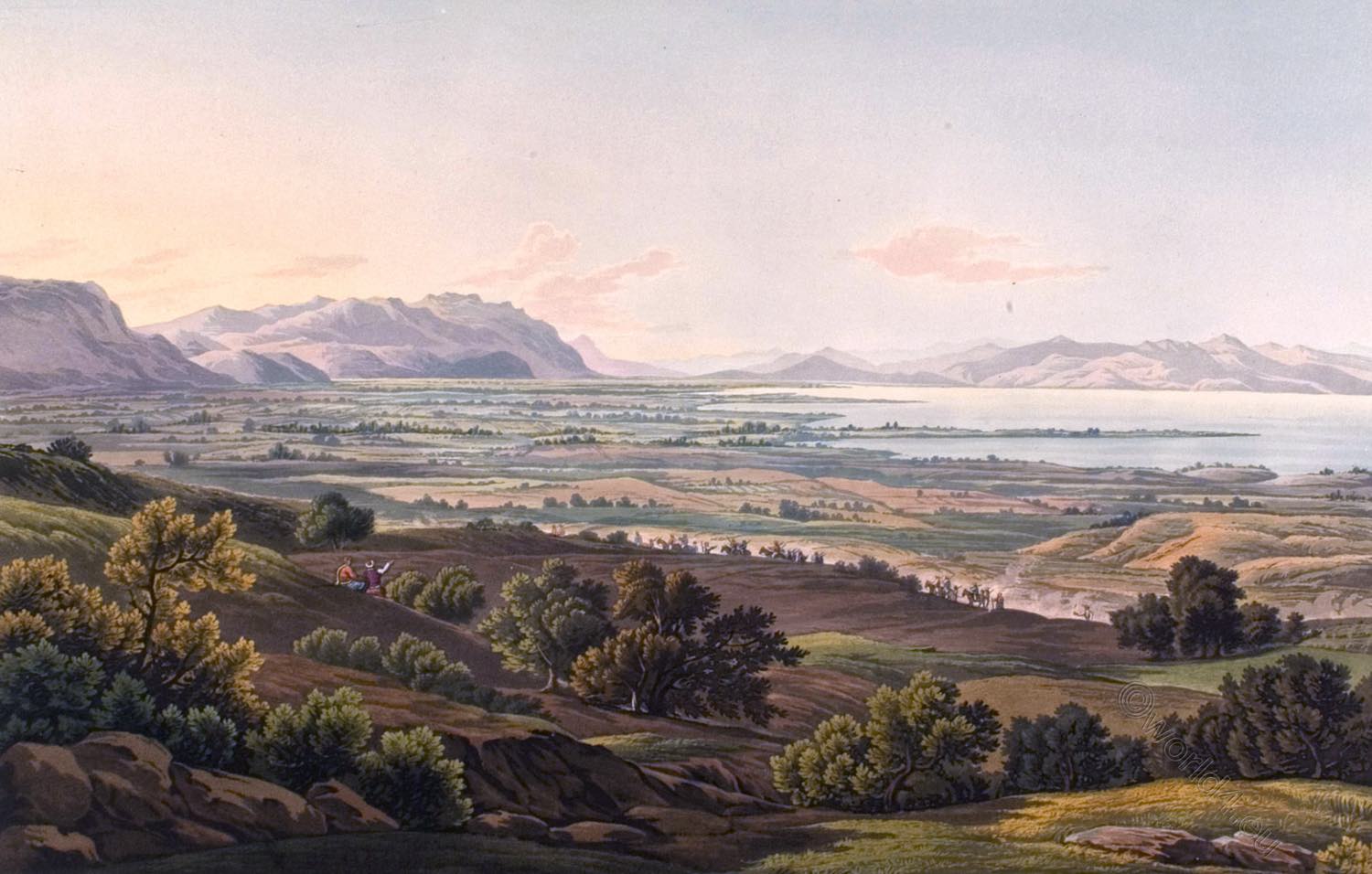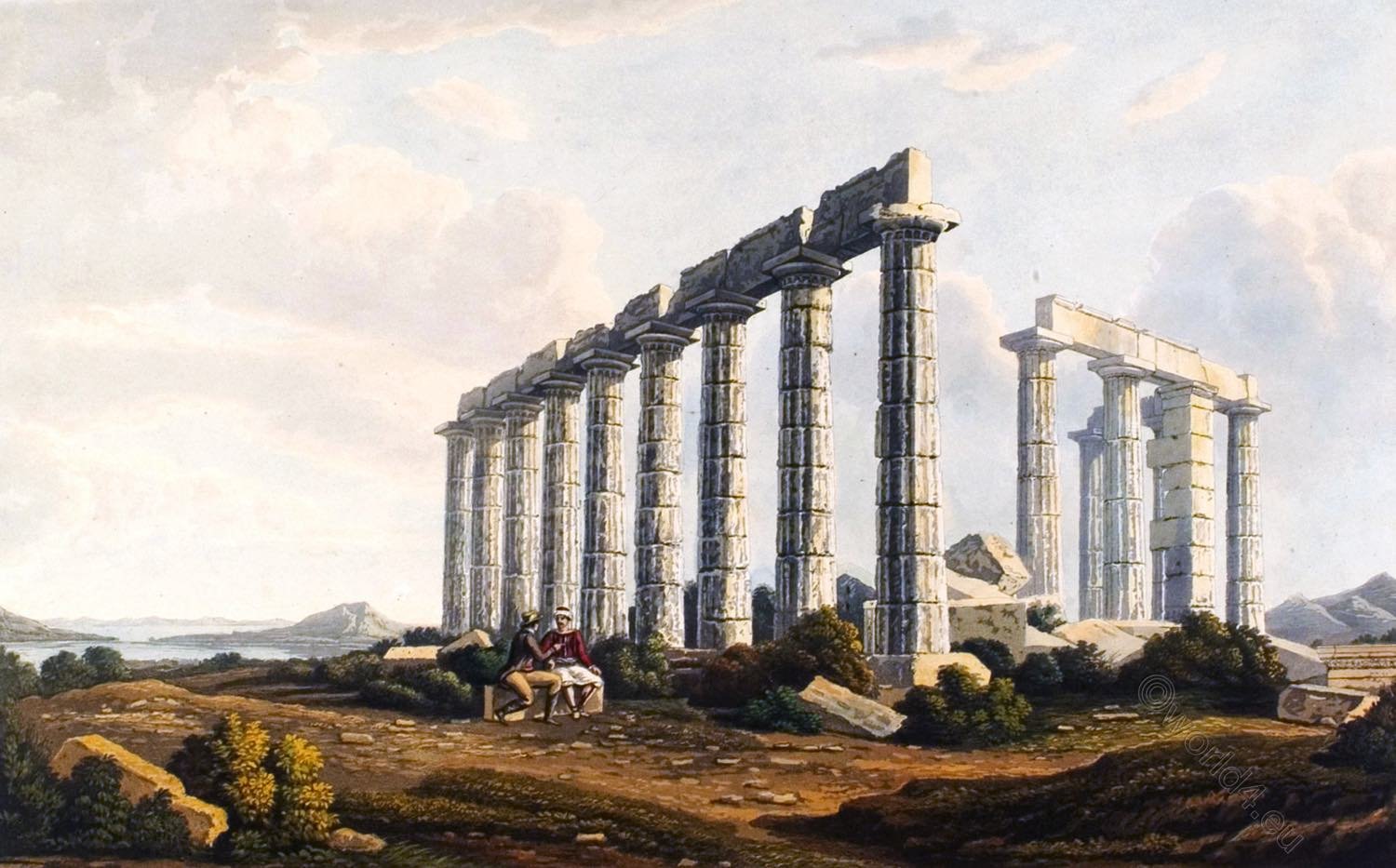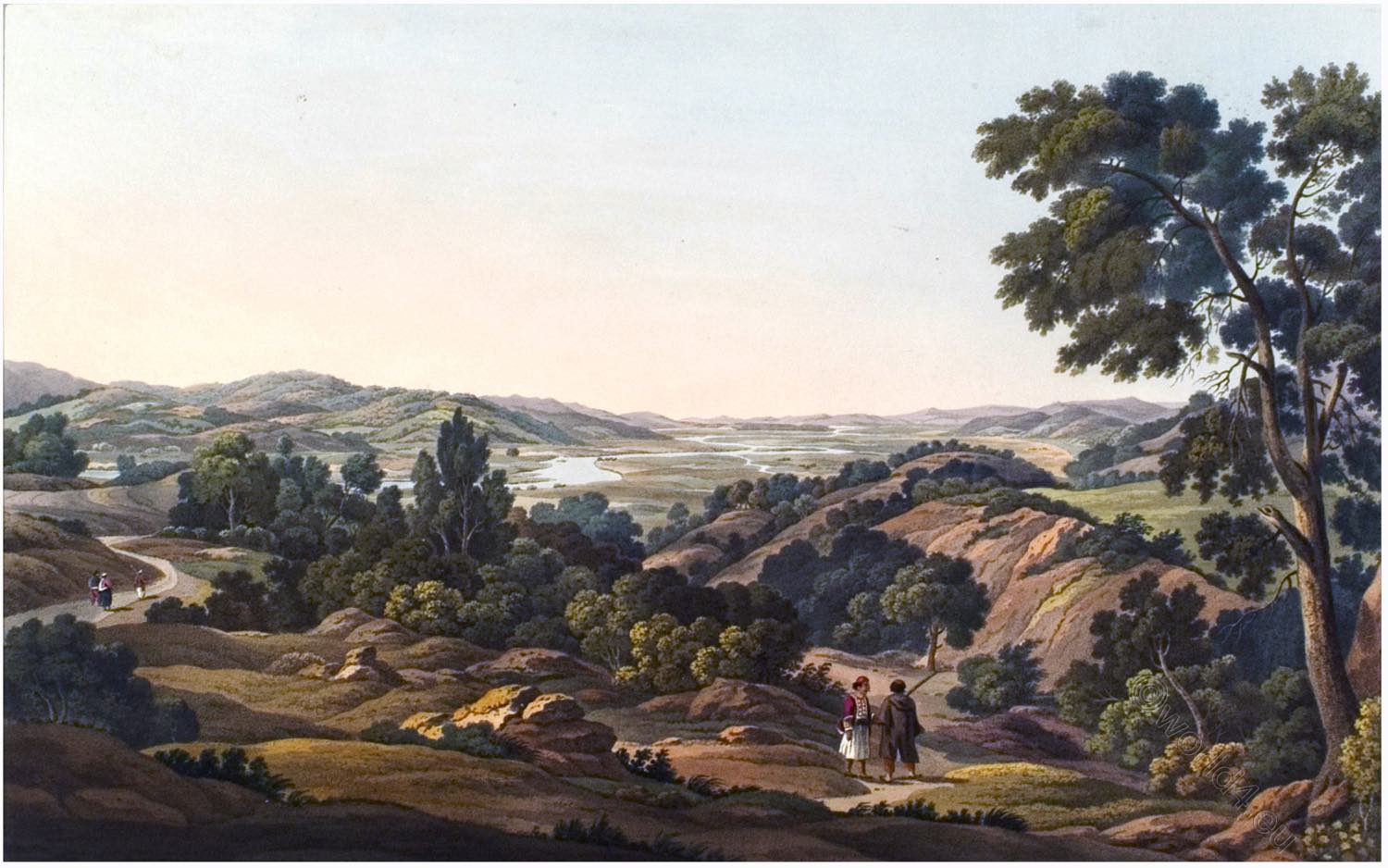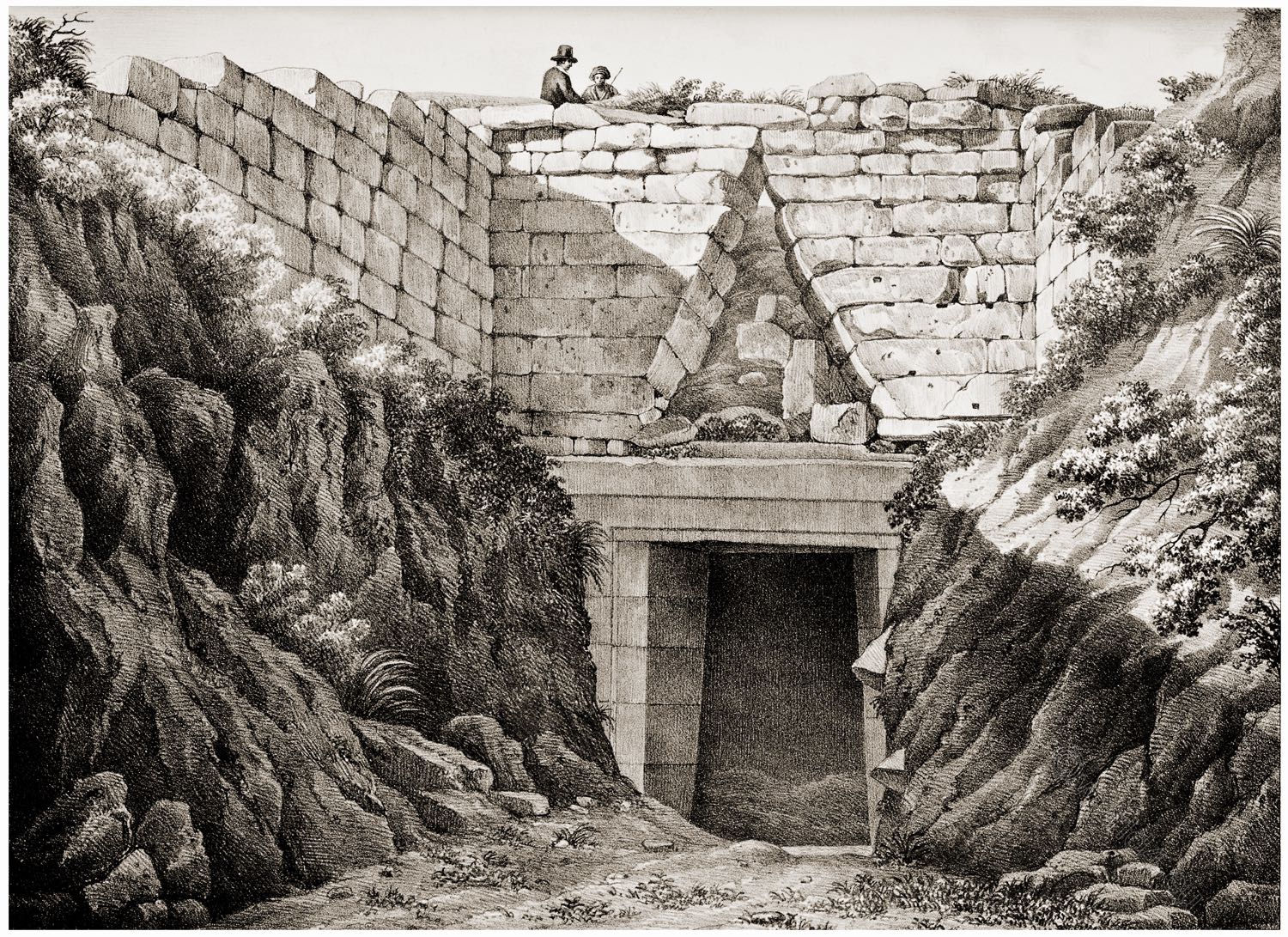
No. IX.
EXTERIOR VIEW OF THE TREASURY OF ATREUS.
Pausanias 1) says that the subterraneous chambers of Atreus and his sons, in which they kept their treasures, were among the ruins of Mycenae; as also the sepulchres of Atreus and of all those who, together with Agamemnon, were treacherously slain by AEgisthus after their return from Troy.
Pausanias does not enter in to a description of the Treasury of Atreus; but his more particular account of the Treasury of Minyas, at Orchomenos, in Boeotia, is perfectly applicable to that of Atreus, at Mycenas, which still remains entire. He says it is of a circular form, with the ceiling terminating in a point, but not accuminated, and that it was one of the wonders of Greece.
A space of twenty feet in breadth, between two parallel walls, leads to the Treasury of Atreus. This entrance is nine feet and a half wide at the base, and seven feet ten inches at top, and about nineteen feet in height. It leads, by a passage of eighteen feet in depth, contrived in the solid mass of the wall, to the subterraneous circular apartment, which resembles a Gothic dome, and is concentrated in a key-stone at the top.
The Treasury of Minyas 2) was of larger dimensions than this of Atreus: the former was of white marble—this at Mycenae is composed of a hard and beautiful breccia, cut upon the spot.
The portal and front of the great chamber (the only part not covered with earth) face the acropolis. Over the lintel is a triangular niche—at present destitute of any ornament, though we must suppose that it originally displayed some appropriate decoration.
Its height is twelve feet, and its breadth eight feet seven inches. Some masses of rosso antico (marble) and a columnar pilaster, with its base, are lying among the ruins near the gate. These fragments are covered with spiral and zig-zag ornaments: indeed the whole front of the edifice appears to have been sumptuously embellished, as several holes are visible in the stones, to which ornaments were probably attached.
The structure itself, as well as its decorative appendages, manifest so many striking lineaments of the Egyptian style, that we may reasonably suppose it to have been constructed by the colony of the Belides, after the expulsion of the Inachidae from the Argolic territory.
1) B. 2, c. 16.
2) The domed tomb of Orchomenos, the so-called “Treasure House of Minyas”, is located in the Greek countryside of Boeotia, in the western part of the village of Orchomenos, southwest of the ancient theater. This is an underground tholos structure built during the Late Helladic period in the 13th century BC. It was excavated by Heinrich Schliemann. The Treasury of Minyas is the second largest Mycenaean domed tomb and is only slightly smaller than the Treasury of Atreus at Mycenae. However, the decoration of the tomb was probably richer. It was built of local marble quarried in the vicinity of Livadia.
Source: Views and descriptions of Cyclopian, or, Pelasgic remains, in Greece and Italy: with constructions of a later period: from drawings by the late Edward Dodwell … intended as a supplement to his Classical and topographical tour in Greece during the years 1801, 1805, and 1806 by Edward Dodwell (1767-1832). London: Adolphus Richter, 1834).
Continuing
Discover more from World4 Costume Culture History
Subscribe to get the latest posts sent to your email.

